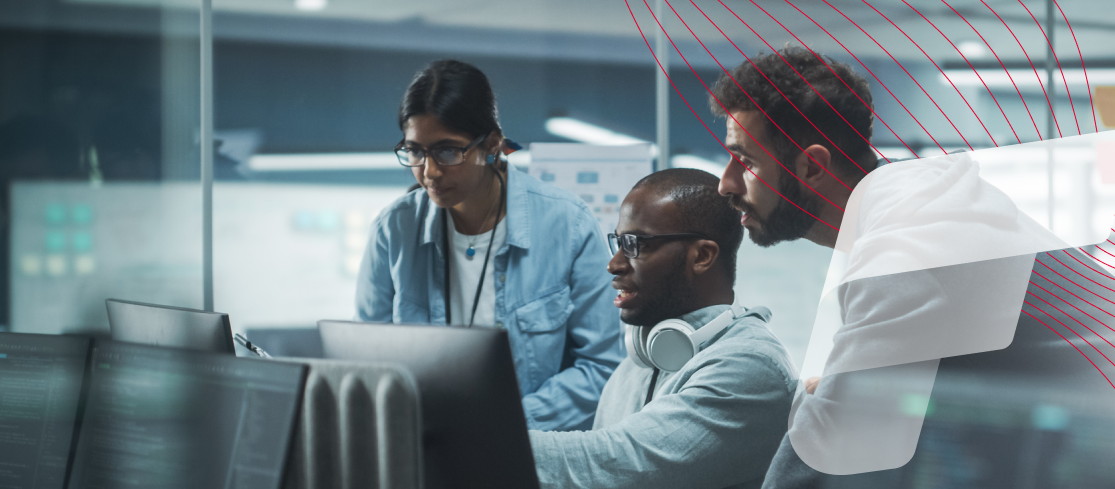2024 continued to be a year of massive disruption for the technology sector. In addition to the ripple effects of widespread AI integration (to varying degrees), we also witnessed one of the most significant IT outages in recent history with reverberations globally.
As we enter 2025 and look to the future of IT here in Ireland and around the world, the tech landscape is continuing to evolve and develop at pace. This brings with it new opportunities and challenges for businesses, both in the tech sector and across all industries.
This year, emerging technologies and new developments will continue to revolutionise the way organisations operate, deliver services, and engage with customers.
To prepare you for what 2025 may have in store Ergo has collated some of the tech trends we envisage for the sector in the year ahead.
Cloud & Infrastructure
The rapid uptake in AI is driving a greater need for cloud capabilities across all industries. The integration of AI specifically into cloud services is set to transform the sector with cloud providers embedding AI into their platforms at an accelerated rate, enabling business to harness powerful analytics, automation and predictive insights without requiring deep internal expertise. Access to scalable and accessible AI solutions via the cloud will facilitate the adoption of AI across a variety of sectors, driving widespread innovation and efficiency.
As AI adoption continues to accelerate at pace with new and evolving use cases across businesses of all shapes and sizes, we also expect to see a continuing rise in multi-cloud strategies as organisations begin leveraging multiple cloud providers for resilience and flexibility as well as growth in cloud-native development to enhance scalability and efficiency. Multi-cloud and hybrid cloud environments are being adopted to optimise performance, enhance redundancy, and mitigate risks. This approach combines on-premises infrastructure with private and public cloud services, creating a seamless and adaptable IT environment.
With the increasing adoption of cloud solutions, security and resilience continue to become paramount for all senior business leaders, beyond the CIO. Cloud providers are embedding robust measures such as encryption, advanced access controls, and automated disaster recovery to protect data and ensure compliance with regulatory requirements.
Data and AI
In 2024, much of the focus was on assessing the business need, and testing generative AI to gauge its effectiveness in driving efficiencies and productivity gains, but in 2025, AI is no longer the future; it’s firmly in the here and now.
While we are still in the early days of the intelligence revolution, from generative video to autonomous AI agents, and even quantum-powered AI; we will continue to see developments that break new ground in increasingly exciting ways. We will continue to see the integration of AI in business procedures, focusing on automation and decision-making. Responsible AI will also be front of mind for business leaders.
But behind the scenes, the trend will be towards AI that enhances our lives in more subtle, seamless ways. AI tools and applications will become more integrated into the way we live and work, letting us make better, more data-informed decisions and augmenting our creativity as well as our productivity.
It will also be interesting to see how AI regulation continues to evolve in 2025, and the likelihood of the European Union enforcing a fine on a generative AI provider for the first time under the EU AI Act. With the EU AI Office and data protection authorities joining forces, a general-purpose AI (GPAI) model provider may receive the first fine for violating the EU AI Act in 2025.
When it comes to data, on the other hand, we will likely see progress in advanced analytics, including the adoption of AI-driven analytics to derive insights from large datasets, enhancing predictive capabilities. We also hope to see further data democratisation which will make data accessible to a broader range of users within organisations, facilitating a data-literate workforce.
Edge computing also continues to gain prominence by bringing computation and data storage closer to the source of data generation. This reduces latency, improves speed, and enhances user experience, particularly for applications requiring real-time data processing.
Application Development
As businesses continue to evolve in response to new technologies, customer demands, and operational challenges, the trends in application and integration solutions are also changing. In 2025, application development will likely be shaped by a combination of emerging technologies and evolving trends aimed at improving productivity, user experience, and software performance.
For example, there is a growing trend towards developing on-demand applications that provide users with immediate access to services and products. This model caters to the increasing consumer demand for convenience and instant gratification.
Similarly, we will likely see enhanced security measures in application development. With rising concerns over data privacy and security, application development is placing a stronger emphasis on implementing robust security protocols.
Security
In 2025, the threat posed to global businesses by hackers, data theft and other cyberattacks will remain immense. In recent years, there has been a surge in attacks against critical infrastructure, with cybercriminals targeting energy grids, healthcare infrastructure, and even electoral systems. We may see AI begin to play more of a role in cybersecurity, utilising AI for threat detection and as a response to mitigate risks.
Disinformation security is an emerging category of technology that systematically discerns trust and aims to provide methodological systems for ensuring integrity, assessing authenticity, preventing impersonation and tracking the spread of harmful information. By 2028, Gartner predicts that 50% of enterprises will begin adopting products, services or features designed specifically to address disinformation security use cases, up from less than 5% today.
As we head into 2025, organisations, especially financial services, should focus on cyber resiliency to keep up with the ever-changing regulatory landscape. New rules like the Digital Operational Resiliency Act (DORA) will come into force in January, so it will be imperative that organisations embrace regulatory frameworks. Organisations should also prioritise the secure management of customer data within cloud environments and implement robust cloud security strategies to prevent hostile cyber-attacks.
To learn more about how to get ready for Dora, download our ‘Get ready for DORA’ e-book.
Sustainability & Green Tech
In recent years, many IT organisations have started to seriously consider their carbon footprint and impact on the environment. Compute-intensive applications such as AI training, simulation, optimisation and media rendering, are likely to be the biggest contributors to organisations’ carbon footprint as they consume the most energy. We are likely to see a shift towards more energy-effective computing, particularly with infrastructure.
In 2025, sustainability in technology will be a key focus across industries as the world seeks to address climate change, resource depletion, and environmental degradation. Many organisations and governments are committing to sustainable technology goals that emphasise energy efficiency, carbon neutrality, waste reduction, and broader environmental impact.
In recent years, we’ve seen significant advances in the technology space ranging from the growing popularity of electric cars to groundbreaking developments in carbon capture and storage. It will be interesting to see if there will be an acceleration in developing and adopting clean energy storage, with breakthroughs in battery and grid-based technologies set to improve reliability and efficiency.
We will likely see a rise in sustainable practices and energy-efficient computing in 2025 and beyond. This will include an emphasis on using technology to meet sustainability goals, such as national targets or the UN Sustainable Development Goals, and many companies targeting net-zero emissions.
We may also see developers focus on creating more energy-efficient algorithms, especially for applications powered by AI, blockchain, and machine learning. Another aspect of sustainable tech is the adoption of renewable energy in tech to support the circular economy through waste reduction and resource efficiency. We may see companies striving for renewable energy usage in their operations including their data centres, offices, and manufacturing processes.
Conclusion
Over the next twelve months, we will see the tech landscape continue to change and advance with the integration of new and emerging technologies across various sectors. As businesses continue to adapt to innovations in AI, cloud infrastructure, security, and sustainability, they will encounter both new opportunities and challenges. The ongoing evolution of technology will require organisations to remain agile, embrace new solutions, and focus on responsible implementation and governance. As we look toward the future, it’s clear that the rapid pace of technological change and ever evolving regulatory landscape will continue to transform industries.
Stay Ahead with Ergo’s Expertise
As the tech landscape continues to evolve, it’s crucial to stay informed and prepared. Ergo is here to guide you through the latest trends and innovations in technology. Whether it’s AI integration, cloud solutions, or cybersecurity, our team of experts is ready to help!
Contact us






